You are viewing the article Oxygen(O) Electron Configuration and Orbital Diagram at Tnhelearning.edu.vn you can quickly access the necessary information in the table of contents of the article below.
Oxygen(O) Electron Configuration and Orbital Diagram
Oxygen is the 8th element in the periodic table and its symbol is ‘O’. In this article, I have discussed in detail how to easily write the complete electron configuration of oxygen. I also discussed how to draw and write an orbital diagram of oxygen. Hopefully, after reading this article, you will know more about this topic.
What is the electron configuration of oxygen?
The total number of electrons in oxygen is eight. These electrons are arranged according to specific rules in different orbitals. The arrangement of electrons in oxygen in specific rules in different orbits and orbitals is called the electron configuration of oxygen.
The electron configuration of oxygen is 1s2 2s2 2p4, if the electron arrangement is through orbitals. Electron configuration can be done in two ways.
- Electron configuration through orbit (Bohr principle)
- Electron configuration through orbital (Aufbau principle)
Electron configuration through orbitals follows different principles. For example Aufbau principle, Hund’s principle, and Pauli’s exclusion principle.
Electron configuration through orbit
Scientist Niels Bohr was the first to give an idea of the atom’s orbit. He provided a model of the atom in 1913. The complete idea of the orbit is given there.
The electrons of the atom revolve around the nucleus in a certain circular path. These circular paths are called orbit(shell). These orbits are expressed by n. [n = 1,2,3,4 . . . The serial number of the orbit]
K is the name of the first orbit, L is the second, M is the third, and N is the name of the fourth orbit. The electron holding capacity of each orbit is 2n2.
| Shell Number (n) | Shell Name | Electrons Holding Capacity (2n2) |
| 1 | K | 2 |
| 2 | L | 8 |
| 3 | M | 18 |
| 4 | N | 32 |
For example,
- n = 1 for K orbit.
The maximum electron holding capacity in K orbit is 2n2 = 2 × 12 = 2. - For L orbit, n = 2.
The maximum electron holding capacity in L orbit is 2n2 = 2 × 22 = 8. - n=3 for M orbit.
The maximum electrons holding capacity in M orbit is 2n2 = 2 × 32 = 18. - n=4 for N orbit.
The maximum electrons holding capacity in N orbit is 2n2 = 2 × 42 = 32.
Therefore, the maximum electron holding capacity in the first shell is two, the second shell is eight and the 3rd shell can have a maximum of eighteen electrons. The atomic number is the number of electrons in that element.
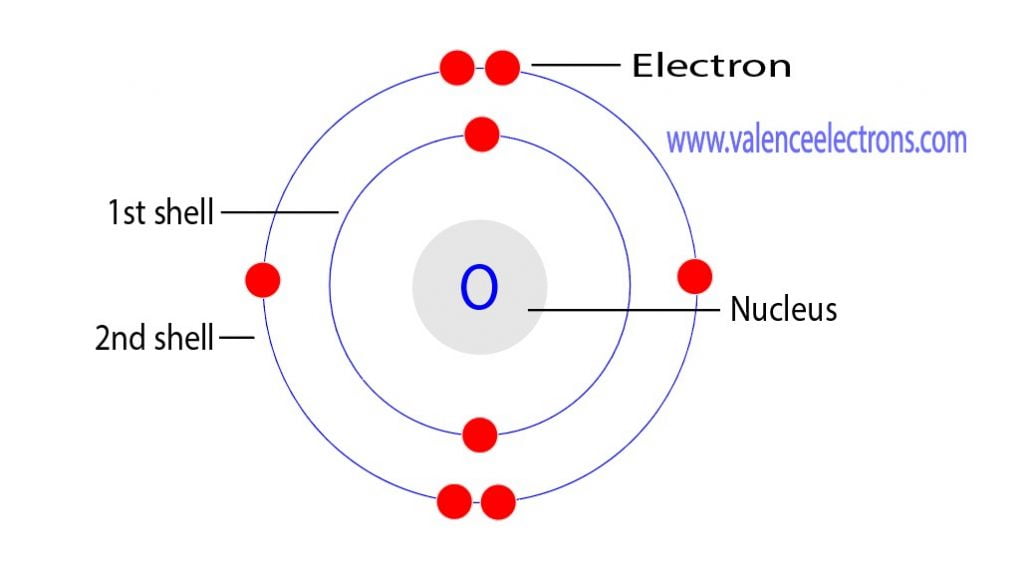
The atomic number of oxygen is 8. That is, the number of electrons in oxygen is 8. Therefore, an oxygen atom will have two electrons in the first shell and six in the 2nd shell.
Therefore, the order of the number of electrons in each shell of the oxygen(O) atom is 2, 6. Electrons can be arranged correctly through orbits from elements 1 to 18.
The electron configuration of an element with an atomic number greater than 18 cannot be properly determined according to the Bohr atomic model. The electron configuration of all the elements can be done through the orbital diagram.
Electron configuration through orbital
Atomic energy shells are subdivided into sub-energy levels. These sub-energy levels are also called orbital. The most probable region of electron rotation around the nucleus is called the orbital.
The sub-energy levels depend on the azimuthal quantum number. It is expressed by ‘l’. The value of ‘l’ is from 0 to (n – 1). The sub-energy levels are known as s, p, d, and f.
| Orbit Number | Value of ‘l’ | Number of subshells | Number of orbital | Subshell name | Electrons holding capacity | Electron configuration |
| 1 | 0 | 1 | 1 | 1s | 2 | 1s2 |
| 2 | 0
1 |
2 | 1
3 |
2s
2p |
2
6 |
2s2 2p6 |
| 3 | 0
1 2 |
3 | 1
3 5 |
3s
3p 3d |
2
6 10 |
3s2 3p6 3d10 |
| 4 | 0
1 2 3 |
4 | 1
3 5 7 |
4s 4p 4d 4f |
2
6 10 14 |
4s2 4p6 4d10 4f14 |
For example,
- If n = 1,
(n – 1) = (1–1) = 0
Therefore, the value of ‘l’ is 0. So, the sub-energy level is 1s. - If n = 2,
(n – 1) = (2–1) = 1.
Therefore, the value of ‘l’ is 0, 1. So, the sub-energy levels are 2s, and 2p. - If n = 3,
(n – 1) = (3–1) = 2.
Therefore, the value of ‘l’ is 0, 1, 2. So, the sub-energy levels are 3s, 3p, and 3d. - If n = 4,
(n – 1) = (4–1) = 3
Therefore, the value of ‘l’ is 0, 1, 2, 3. So, the sub-energy levels are 4s, 4p, 4d, and 4f. - If n = 5,
(n – 1) = (n – 5) = 4.
Therefore, l = 0,1,2,3,4. The number of sub-shells will be 5 but 4s, 4p, 4d, and 4f in these four subshells it is possible to arrange the electrons of all the elements of the periodic table.
| Sub-shell name | Name source | Value of ‘l’ | Value of ‘m’
(0 to ± l) |
Number of orbital (2l+1) | Electrons holding capacity
2(2l+1) |
| s | Sharp | 0 | 0 | 1 | 2 |
| p | Principal | 1 | −1, 0, +1 | 3 | 6 |
| d | Diffuse | 2 | −2, −1, 0, +1, +2 | 5 | 10 |
| f | Fundamental | 3 | −3, −2, −1, 0, +1, +2, +3 | 7 | 14 |
The orbital number of the s-subshell is one, three in the p-subshell, five in the d-subshell and seven in the f-subshell. Each orbital can have a maximum of two electrons.
The sub-energy level ‘s’ can hold a maximum of two electrons, ‘p’ can hold a maximum of six electrons, ‘d’ can hold a maximum of ten electrons, and ‘f’ can hold a maximum of fourteen electrons.

Aufbau is a German word, which means building up. The main proponents of this principle are scientists Niels Bohr and Pauli. The Aufbau method is to do electron configuration through the sub-energy level.
The Aufbau principle is that the electrons present in the atom will first complete the lowest energy orbital and then gradually continue to complete the higher energy orbital.
The energy of an orbital is calculated from the value of the principal quantum number ‘n’ and the azimuthal quantum number ‘l’. The orbital for which the value of (n + l) is lower is the low energy orbital and the electron will enter that orbital first.
| Orbital | Orbit (n) | Azimuthal quantum number (l) | Orbital energy (n + l) |
| 3d | 3 | 2 | 5 |
| 4s | 4 | 0 | 4 |
Here, the energy of 4s orbital is less than that of 3d. So, the electron will enter the 4s orbital first and enter the 3d orbital when the 4s orbital is full.
The method of entering electrons into orbitals through the Aufbau principle is 1s 2s 2p 3s 3p 4s 3d 4p 5s 4d 5p 6s 4f 5d 6p 7s 5f 6d.

The first two electrons of oxygen enter the 1s orbital. The s-orbital can have a maximum of two electrons. Therefore, the next two electrons enter the 2s orbital.
The p-orbital can have a maximum of six electrons. So, the remaining four electrons enter the 2p orbital. Therefore, the oxygen full electron configuration will be 1s2 2s2 2p4.
Note: The short electron configuration of oxygen is [He] 2s2 2p4. When writing an electron configuration, you have to write serially.
How to write the orbital diagram for oxygen?
To create an orbital diagram of an atom, you first need to know Hund’s principle and Pauli’s exclusion principle.
Hund’s principle is that electrons in different orbitals with the same energy would be positioned in such a way that they could be in the unpaired state of maximum number and the spin of the unpaired electrons will be one-way.
And Pauli’s exclusion principle is that the value of four quantum numbers of two electrons in an atom cannot be the same. To write the orbital diagram of oxygen(O), you have to do the electron configuration of oxygen.
Which has been discussed in detail above. 1s is the closest and lowest energy orbital to the nucleus. Therefore, the electron will first enter the 1s orbital.
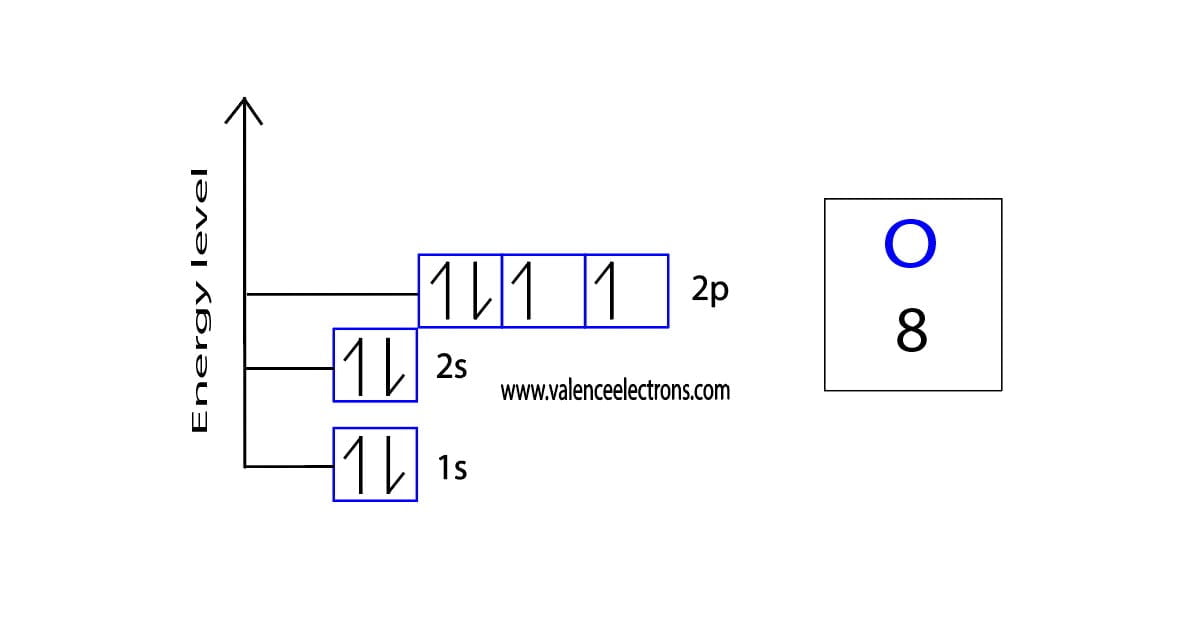
According to Hund’s principle, the first electron will enter in the clockwise direction and the next electron will enter the 1s orbital in the anti-clockwise direction.
The 1s orbital is now filled with two electrons. Then the next two electrons will enter the 2s orbital just like the 1s orbital. The 2s orbital is now full.
So the next three electrons will enter the 2p orbital in the clockwise direction and the next one electron will enter the 2p orbital in the anti-clockwise direction. This is clearly shown in the figure of the orbital diagram of oxygen.
Oxide ion(O2–) electron configuration
The elements that have 5, 6, or 7 electrons in the last shell receive the electrons in the last shell during bond formation. The elements that receive electrons and form bonds are called anion.
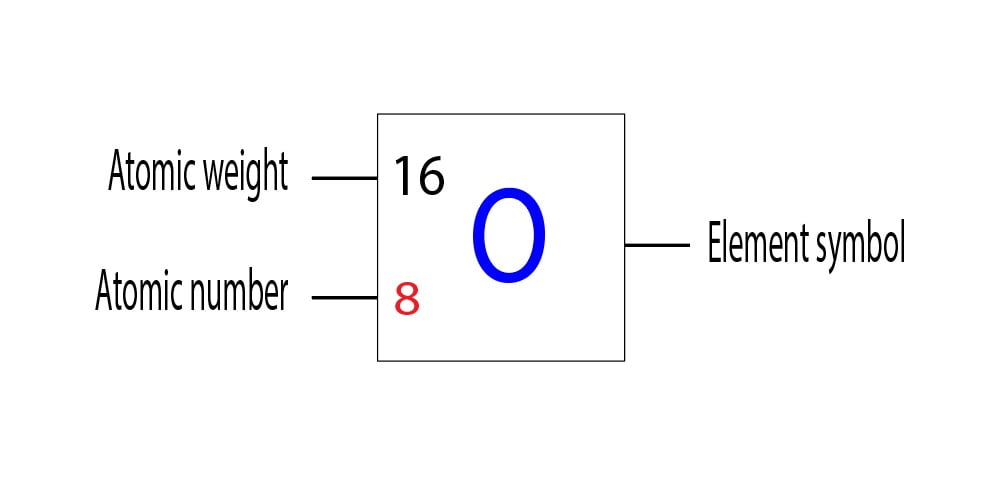
During the formation of a bond, the last shell of oxygen receives two electrons and turns into an oxide ion(O2–). That is, oxygen is an anion element.
O + 2e– → O2–
The electron configuration of oxide ion(O2–) is 1s2 2s2 2p6. This electron configuration shows that the oxide ion(O2–) has acquired the electron configuration of neon and it achieves a stable electron configuration.
How to determine the group and period of oxygen through the electron configuration?
The last orbit of an element is the period of that element. The electron configuration of the oxygen atom shows that the last orbit of the oxygen atom is 2. So, the period of oxygen is 2.
On the other hand, the number of electrons present in the last orbit of an element is the number of groups in that element. But in the case of p-block elements, group diagnosis is different.
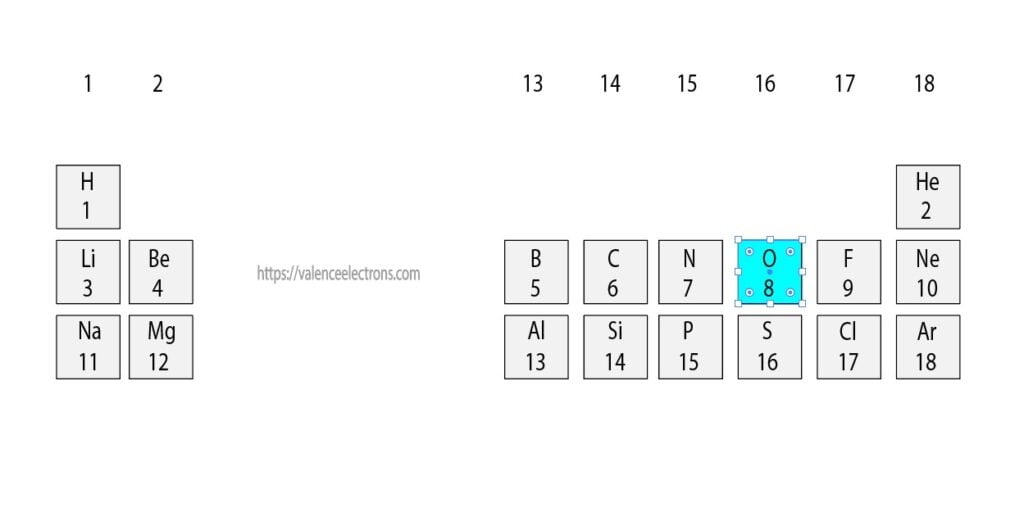
To determine the group of p-block elements, the group has to be determined by adding 10 to the total number of electrons in the last orbit. The total number of electrons in the last orbit of the oxygen atom is six.
That is, the group number of oxygen is 6 + 10 = 16. Therefore, we can say that the period of the oxygen element is 2 and the group is 16.
How to determine the block of oxygen through the electron configuration?
The elements in the periodic table are divided into four blocks based on the electron configuration of the element. The block of elements is determined based on the electron configuration of the element.
If the last electron enters the p-orbital after the electron configuration of the element, then that element is called the p-block element. The electron configuration shows that the last electron of oxygen enters the p-orbital. Therefore, oxygen is the p-block element.
How to determine the valency and valence electrons of oxygen?
The ability of one atom of an element to join another atom during the formation of a molecule is called valency. The number of unpaired electrons in the last orbit of an element is the valency of that element.
The correct electron configuration of oxygen in ground state will be 1s2 2s2 2px2 2py1 2pz1. This electron configuration shows that there are two unpaired electrons in the last orbit of oxygen. Therefore, the valency of the oxygen is 2.
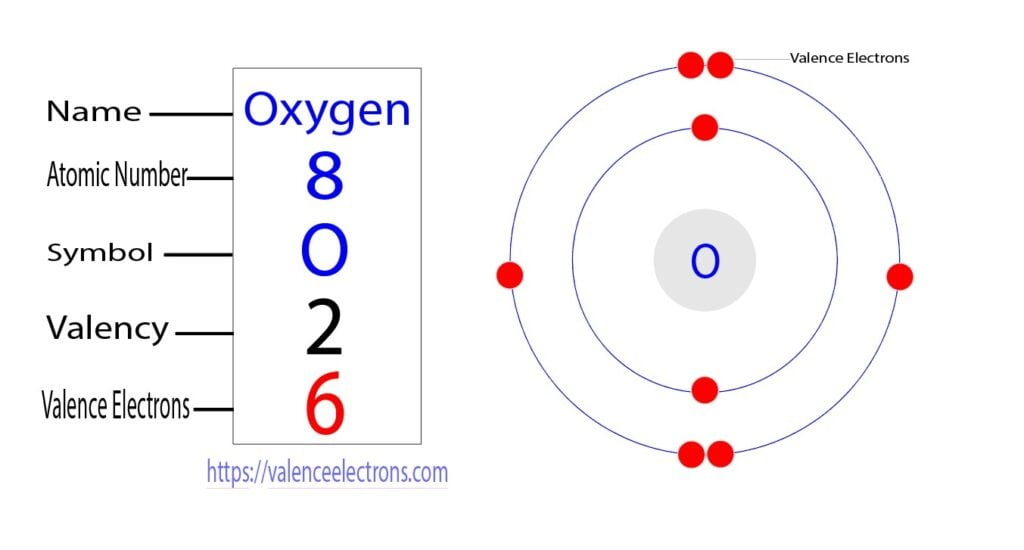
Again, the number of electrons in the last orbit of an element, the number of those electrons is the valence electrons of that element.
In the electron configuration for oxygen, we see that six electrons exist in the last orbit of the oxygen. Therefore, the valence electrons of the oxygen are six.
Bond formation of the oxygen atom
Oxygen atoms always form covalent bonds. Oxygen atoms form covalent bonds by sharing electrons with nitrogen, carbon, sulfur, and hydrogen atoms.
The above electron configuration shows that four electrons exist in the last orbital of the oxygen atom. The oxygen atom wants to fill the electron in its last orbital. Again, there is only one orbital of the hydrogen atom and it has an electron.
The hydrogen atom wants to complete the orbital by receiving an electron. Therefore, two hydrogen atoms share electrons with one oxygen atom to produce water through covalent bonding.
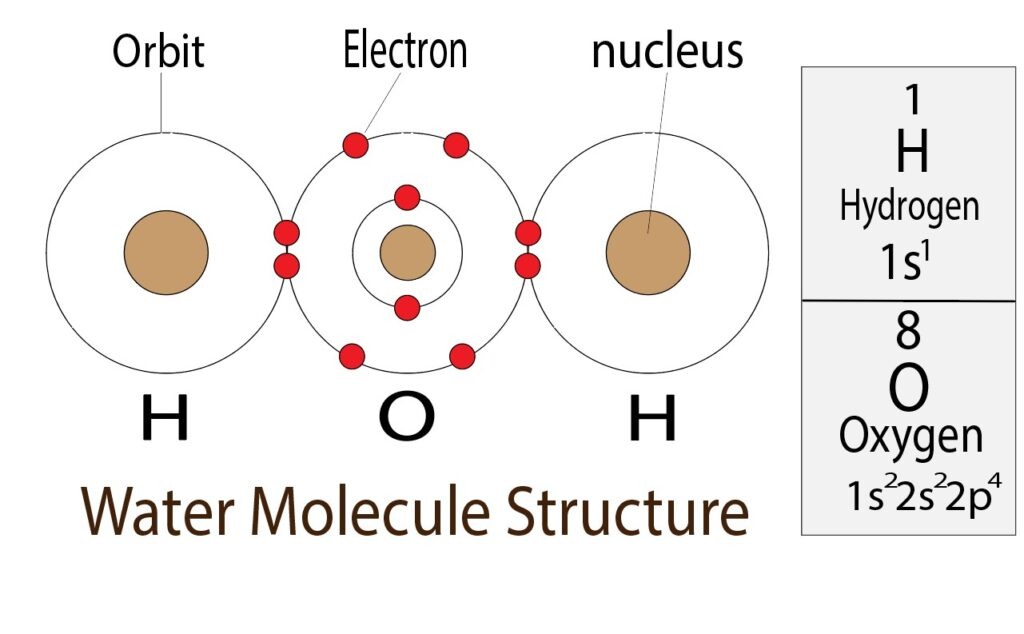
Formation of an oxygen compound
One of the elements of group-16 is oxygen. Oxygen is a very active and electrically negative element. Therefore, oxygen can easily participate in the reaction.
Reaction of oxygen atoms with hydrogen
Oxygen atoms react with hydrogen atoms to produce water.
O2 + H2 → H2O
Water is liquid under normal conditions.
Reaction of oxygen with Metals
Oxygen atoms react with metals to form metal oxides. E.g.
Q + O2 → QO2 [here, metal = Q]
Sodium reacts with oxygen to produce Na2O. Na2O dissolves in water to produce NaOH.
4Na+O2 → 2Na2O
Na2O+H2O → 2NaOH
Potassium reacts with oxygen to produce K2O with a purple flame. It dissolves in water to produce KOH.
4K + O2 → 2K2O
K2O + H2O → 2KOH
However, sodium and potassium react with excess oxygen to produce sodium peroxide and potassium superoxide.
2Na + O2 (extra) → Na2O2
K + O2 (extra) → KO2
Oxygen reacts with other metals to form metal oxides
- 2Mg + O2 → 2MgO
- 2Al + 3O2 → 2Al2O3
- 2Cu + O2 → 2CuO
- 4Ag + O2 → 2Ag2O
- 2Zn + O2 → 2ZnO
- 2Hg + O2 → 2HgO
Oxygen reaction with non-metallic atoms
Boron(B), Carbon(C), Phosphorus(P), Sulfur(S), etc. react with oxygen to form non-metallic oxides.
4B + 3O2 → 2B2O3
S + O2 → SO2
4P + 5O2 → 2P2O5
C + O2 → CO2
The bonding length of the oxygen atom
- The bonding length of O = O is 136 pm.
- The bonding length of O – O is 148 pm.
- The bond length of O = C is 123 pm.
- The bond length of C – O is 143 pm.
- The bond length of N = O is 122 pm.
- The bond length of N – O is 136 pm.
- The bond length of O – H is 97 pm.
Properties of the oxygen atom
- The atomic number of oxygen atoms is 8. The atomic number of an element is the number of electrons and protons in that element. That is, the number of electrons and protons in the oxygen atom is eight.
- The active atomic mass of the oxygen atom is [15.99903, 15.99977].
- Oxygen is non-metal.
- The valency of an oxygen atom is 2 and the valence electrons of an oxygen atom are six.
- Oxygen atoms are the 2nd period of the periodic table and an element of the 16-group.
- At normal temperatures, oxygen molecules remain in the form of gases.
- Oxygen is an anion element.
- Oxygen atoms form covalent bonds.
- Oxygen is the p-block element.
- The melting point of an oxygen atom is 54.36 K (−218.79 °C, −361.82 °F) and the boiling point is 90.188 K (−182.962 °C, −297.332 °F).
- The electronegativity of oxygen atoms is 3.44 (Pauling scale).
- The oxidation states of oxygen are –2, –1.
- The ionic radius of the oxygen atom is 48 pm.
- Oxygen atom van der Waals radius is 152 pm.
- Ionization energies of oxygen atoms are 1st: 1313.9 kJ/mol, 2nd: 3388.3 kJ/mol, 3rd: 5300.5 kJ/mol.
- The electron addiction of oxygen atoms is –142 kJ/mol.
- The covalent radius of the oxygen atom is 66±2 pm.
- Oxygen exhibits ionic properties.
FAQs
-
What is the electron configuration of oxygen? 1s2 2s2 2p4.
-
How can oxygen become a stable electron configuration? The oxygen atom takes 2 electrons to fill the octave and become stable. The electron configuration of oxygen ions(O2–) is 1s2 2s2 2p6.
-
How many valence electrons does oxygen have? Six valence electrons.
Thank you for reading this post Oxygen(O) Electron Configuration and Orbital Diagram at Tnhelearning.edu.vn You can comment, see more related articles below and hope to help you with interesting information.
Related Search:

